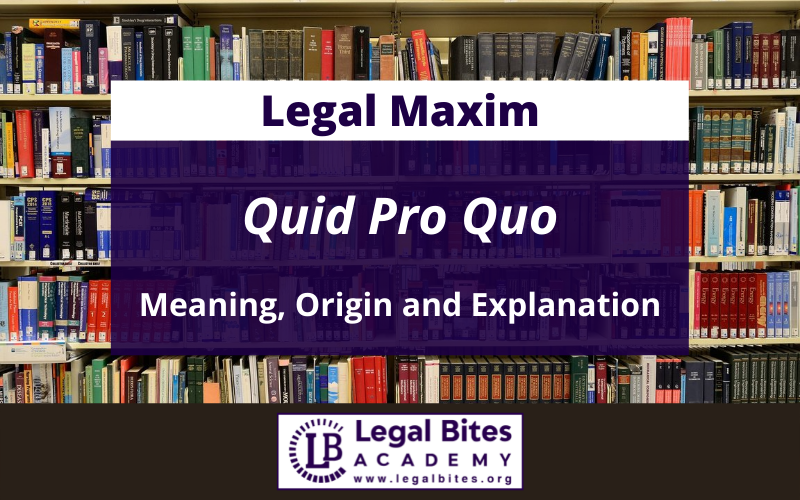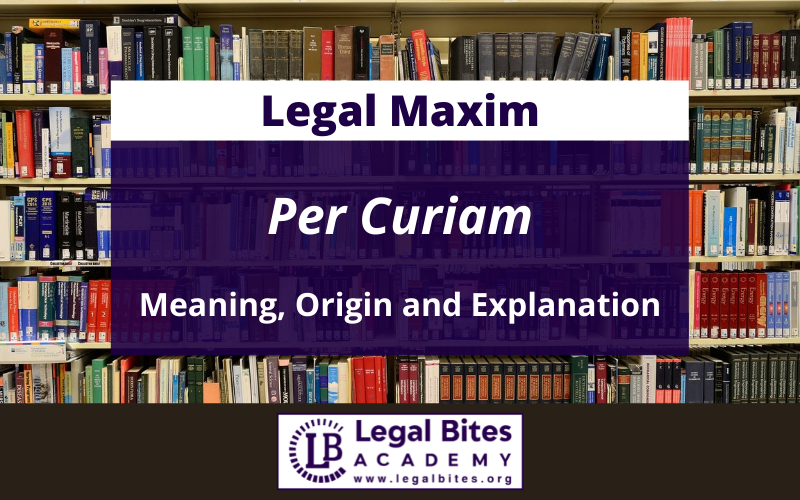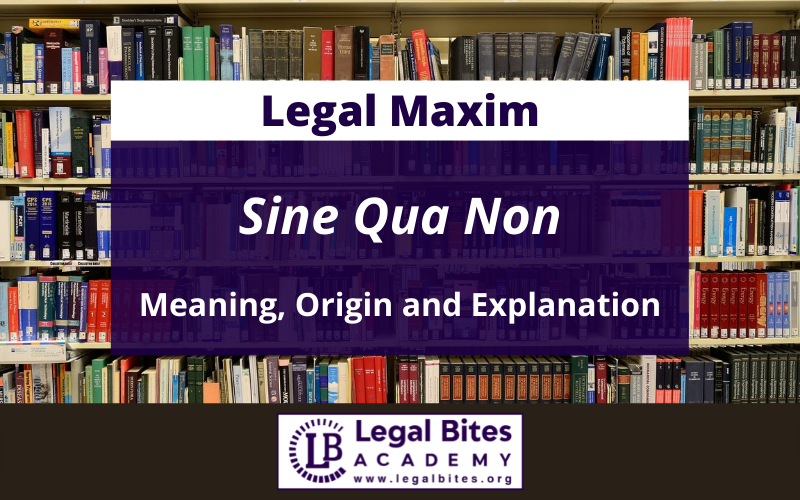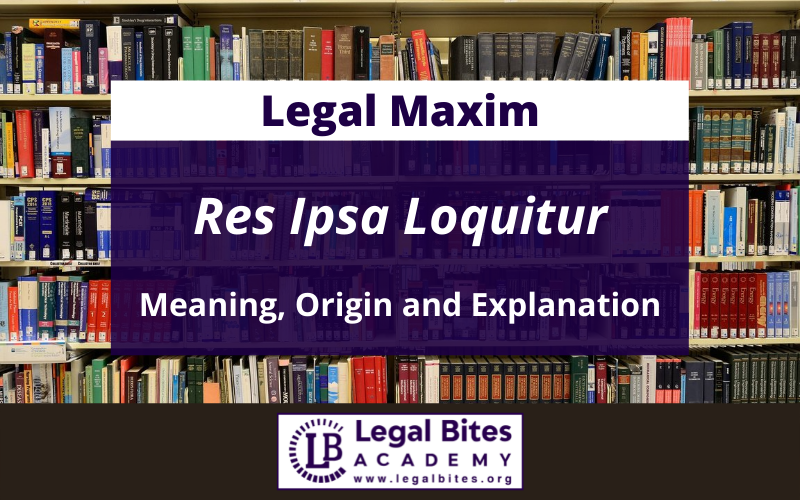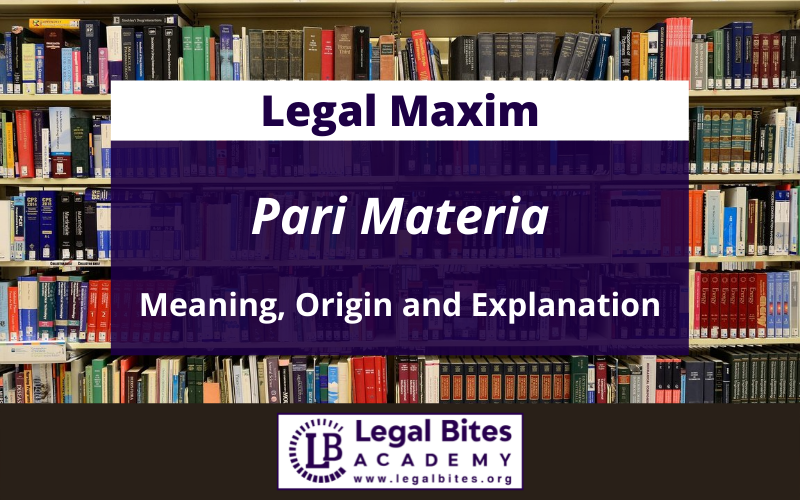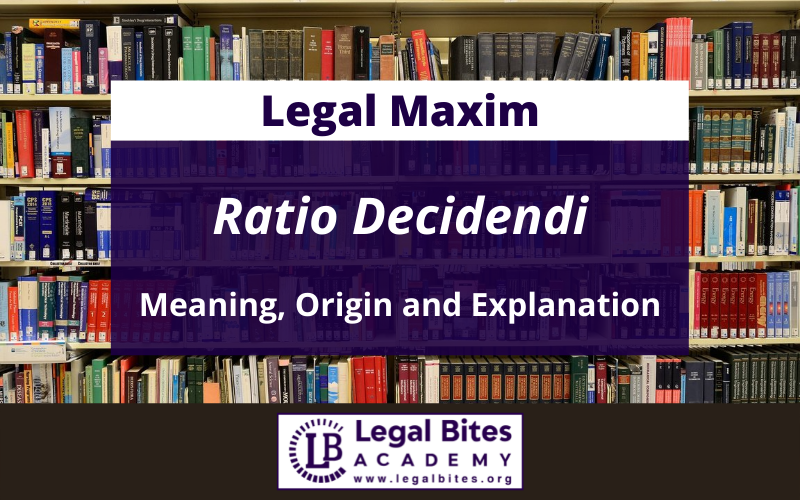Corpus Delicti Meaning, Origin, Application and Important Case Laws
Latin maxim “Corpus Delicti” is explained by Sahajpreet Kaur explains the meaning of the maxim withe the help of illustrations and case laws. Origin and Meaning Corpus Delicti is a legal term of Latin origin. Corpus means ‘body’ and delicti means ‘crime’ and hence, the term corpus delicti means ‘body of crime/ essence of crime’[1]. Explanation Corpus delicti… Read More »
;Latin maxim “Corpus Delicti” is explained by Sahajpreet Kaur explains the meaning of the maxim withe the help of illustrations and case laws. Origin and Meaning Corpus Delicti is a legal term of Latin origin. Corpus means ‘body’ and delicti means ‘crime’ and hence, the term corpus delicti means ‘body of crime/ essence of crime’[1]. Explanation Corpus delicti is a term in Western law, referring to the principle that a crime must be proven to have occurred in order for...
Latin maxim “Corpus Delicti” is explained by Sahajpreet Kaur explains the meaning of the maxim withe the help of illustrations and case laws.
Origin and Meaning
Corpus Delicti is a legal term of Latin origin. Corpus means ‘body’ and delicti means ‘crime’ and hence, the term corpus delicti means ‘body of crime/ essence of crime’[1].
Explanation
Corpus delicti is a term in Western law, referring to the principle that a crime must be proven to have occurred in order for a person to be convicted of the crime. It has been defined by the Black’s Law Dictionary as, “the facts of the crime have actually been committed”.
The maxim is used to denote the physical object that is the subject of the crime, for example, a corpse or the remains of the burned-out house or the act itself, that is, murder or arson. It is also used as evidence that a crime has been committed.
Application
In order to prove that a crime has been committed, two things need to be proved:
- The essence of the crime, for example, if it is a case of murder, the dead body of the person.
- Proof that the criminal act has been committed by a criminal act.
Illustration
Illustration 1
- Unless it can be proven that the property was stolen, no one can be tried for theft. Similarly, for the trial of the crime of arson, it is necessary to prove that the criminal act done resulted in the burning of property.
- A person cannot be trialled for a crime until and unless it is proved that the crime happened.
Illustration 2
- Manan strongly believes that Naman, his neighbour stole his iron. Manan files a police report for the same but he lacks solid proof to prove that Naman too it. Additionally, Naman and other neighbours claim that Manan has memory lapse and hence, his claim cannot be considered without any proof.
- In this case, corpus delicti has not been proven because there is no evidence the crime of theft has actually been committed.
Important Case Laws
In the case of State v. Nicely[2], the body of the victim, also the wife of the accused, has not been found, but there is no lack of circumstantial evidence about it, from the victim’s bloodstains to the discovery of his car abandoned on the bridge and the contradictory statements of the accused.
The defendant was convicted on the basis of circumstantial evidence of the serious murder of his wife and the court held that there was the presence of corpus delicti.
Reference
[1] Merriam Webster, Corpus Delicti, Available Here
[2] 39 Ohio St. 3d 147 (Ohio 1988).



